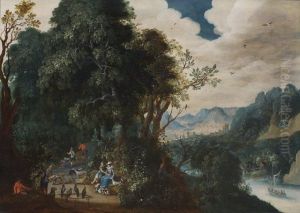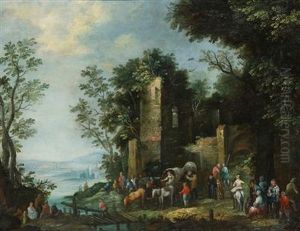Johann Jakob Hartmann Paintings
Johann Jakob Hartmann was a Swiss painter, born in 1869, known for his contribution to the art world during the late 19th and early 20th centuries. His works, characterized by their meticulous detail, vibrant colors, and often idyllic landscapes, reflect a blend of realism and romanticism, capturing the essence of Swiss scenery and rural life with a unique sensitivity and depth. Hartmann's artistic journey began in his early years, deeply influenced by the picturesque landscapes of his homeland, which would remain a central theme throughout his career.
Hartmann received his formal art education in Switzerland, where he was exposed to various artistic movements and techniques. He was particularly drawn to the works of the earlier Romantic period, which is evident in his choice of subjects and his approach to capturing light and atmosphere. Despite the influence of Romanticism, Hartmann also showed a keen interest in the emerging trends of realism, striving to depict the Swiss countryside and its inhabitants with an authentic and unembellished eye.
Throughout his career, Johann Jakob Hartmann participated in numerous exhibitions, both in Switzerland and abroad, gaining recognition and accolades for his contribution to Swiss art. His paintings not only celebrated the natural beauty of Switzerland but also documented rural life, traditions, and customs, serving as a valuable cultural record. Hartmann's commitment to portraying his homeland with such fidelity and warmth earned him a special place in the hearts of the Swiss people.
Hartmann's legacy is preserved in various Swiss museums and galleries, where his works continue to be admired for their beauty and historical value. His dedication to capturing the essence of Swiss landscapes and rural life has left an indelible mark on the art world, making him a significant figure in the history of Swiss painting. Johann Jakob Hartmann passed away in 1952, leaving behind a rich body of work that continues to inspire and captivate art lovers and historians alike.

